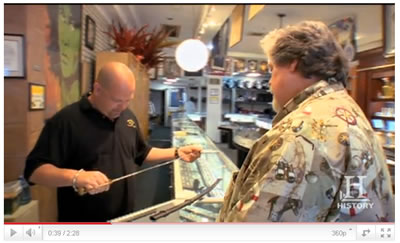
Have you ever negotiated with someone who will just not shut up? This makes it hard for you to make a point or get a word in. Plus, it’s difficult to close a deal or gain a concession when they won’t stop talking. We have three tips that will help you in this very specific situation.
Tip number one: When they finally do shut up and you are able to open your mouth, do not provide any new information. People who have diarreah of the mouth tend to take off on tangents when presented with new information and make it harder for you to reach your goal, not easier.
Tip number two: When you do open your mouth, instead of telling your counterpart anything, ask them only closed-ended questions. Close-ended questions can be answered with a simple yes or no or an alternative choice as a possible response. For example, “Will this product be used in San Diego or at your manufacturing facility in Mexico?” Either response is close-ended and is going to help you to move your negotiation forward.
Tip number three: Utilize transition lines that bring people back to the focus of the negotiation. If your counterpart is telling you their life history, you can respond with the following type of transition. “That’s a great point. Tell me why you think this model is the best match for your company.”
So, the next time you encounter a windbag in your negotiation that won’t shut up, remember, don’t provide any new information. Two, ask only close-ended questions. And three, build great transition lines that bring the focus back to your goal.
Next month we’ll discuss what to do when you are faced with the opposite problem: a very silent counterpart.
 In our
In our  Time and information are two critical elements in any negotiation. To get these elements on your side, you must realize one very important fact: the negotiation process begins long before you ever meet with the other party.
Time and information are two critical elements in any negotiation. To get these elements on your side, you must realize one very important fact: the negotiation process begins long before you ever meet with the other party. What happens when you put the following people into one room: David Stern (The Commissioner of the NBA), Billy Hunter (Union Executive Director), a selected group of NBA team owners, and last, a group of players who happen to be some of the highest paid people in America? You end up with a room full of egos so big that they don’t have the capacity to negotiate to a win-win outcome.
What happens when you put the following people into one room: David Stern (The Commissioner of the NBA), Billy Hunter (Union Executive Director), a selected group of NBA team owners, and last, a group of players who happen to be some of the highest paid people in America? You end up with a room full of egos so big that they don’t have the capacity to negotiate to a win-win outcome. In a negotiation, there are times when you have to tell your counterpart “No.” The challenge is that for some people, the word “no” is the equivalent of a four letter word. Telling your counterpart a resounding “No,” could cause the negotiation to deteriorate to the point that neither counterpart is able to achieve a win-win outcome.
In a negotiation, there are times when you have to tell your counterpart “No.” The challenge is that for some people, the word “no” is the equivalent of a four letter word. Telling your counterpart a resounding “No,” could cause the negotiation to deteriorate to the point that neither counterpart is able to achieve a win-win outcome.  In
In  When you negotiate, confidence is a great attribute to help you achieve a win-win outcome. Dictionary.com defines confidence as the belief in oneself and one’s powers or abilities. When you have deep confidence, your counterpart usually recognizes the confidence that you exude, both verbally and nonverbally. The benefits of having high confidence include:
When you negotiate, confidence is a great attribute to help you achieve a win-win outcome. Dictionary.com defines confidence as the belief in oneself and one’s powers or abilities. When you have deep confidence, your counterpart usually recognizes the confidence that you exude, both verbally and nonverbally. The benefits of having high confidence include:  In a negotiation, the counterpart who has the power is better able to positively leverage or improve their outcome. One of the fastest ways to gain power is to introduce competition into the negotiation. People who make their living by selling a product or service typically do not like it when a buyer tells them they have a different or lower bid from a competitor. It forces a sales person to really “sell” the benefits and value of their proposal. The buyer, on the other hand, loves competition to help improve their deal. When you go out to buy a car from a dealership, and you find the exact same car at three different dealerships, you will achieve a much better outcome by sharing information with one dealer about what the other dealers are willing to do to sell the car.
In a negotiation, the counterpart who has the power is better able to positively leverage or improve their outcome. One of the fastest ways to gain power is to introduce competition into the negotiation. People who make their living by selling a product or service typically do not like it when a buyer tells them they have a different or lower bid from a competitor. It forces a sales person to really “sell” the benefits and value of their proposal. The buyer, on the other hand, loves competition to help improve their deal. When you go out to buy a car from a dealership, and you find the exact same car at three different dealerships, you will achieve a much better outcome by sharing information with one dealer about what the other dealers are willing to do to sell the car.
 For the past month, we’ve been advertising our
For the past month, we’ve been advertising our 


